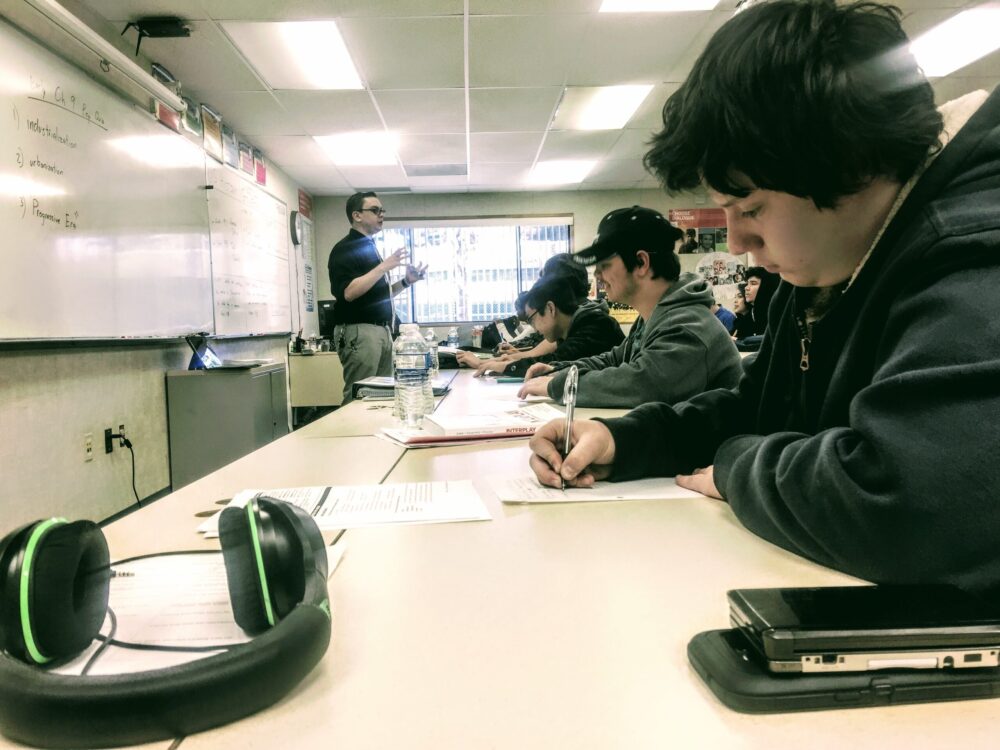Whether your child is looking to get an early start on their college education or has fallen behind on their high school courses, a dual enrollment program may be a good fit to help them achieve their goals. Supported by state legislation, dual enrollment programs have become increasingly popular in California and for good reason, dual enrollment programs offer many benefits to high schoolers in California. From UC Davis,
The benefits of dual enrollment are well established. High school students benefit from college course-taking opportunities by gaining early exposure to college experiences and accumulating units that can later be applied to a college degree. An extensive body of research indicates that students who take college courses while they are still in high school:
- Are more likely to graduate from high school, to enroll and persist in college and to earn a bachelor’s degree in shorter time.
- Outperform non-dual enrollment students on a range of college outcomes, including college enrollment, first year grade point average (GPA), credit accumulation and persistence to the second year of college.
Because of these great benefits that dual enrollment offers to high school students, we wanted to provide a quick guide to better understand dual enrollment in California. In this guide we will cover the basics of dual enrollment and provide answers on how to get started.
What is dual enrollment in California?
Dual enrollment lets you earn college credit for college courses completed while you’re still in high school – and those courses also count toward your high school diploma.
As mentioned, studies have shown that dual enrollment is a great way to improve a child’s odds of graduating from college, from edsource.org
California students who took courses in community college while still in high school were more likely than their classmates to graduate and attend a four-year college, even among students who are historically underrepresented in higher education, according to a new report.
What is the difference between dual enrollment and concurrent enrollment?
Many people use the terms dual enrollment and concurrent enrollment interchangeably, though there can be differences across states and programs.
National Alliance of Concurrent Enrollment Partnerships (NACEP) does note this distinction,
Sometimes called “dual credit,” “dual enrollment,” “college in the high school,” or “early college,” concurrent enrollment differs from other models of dual enrollment because high school instructors teach the college courses.
Can a high school student take community college classes in California?
Yes!
From edsource.org
High school students are eligible to enroll in any community college in the state without charge as long as they are enrolled in courses that earn them less than 12 units.
Of course, dual enrollment programs like the tuition-free Gateway College and Career Academy make it simple to take college courses while in high school.
What are the dual enrollment requirements in California?
As stated above, almost any high school student is eligible for dual enrollment as long as the courses earn them less than 12 units.
But finding the right program is more than just the number of units.
You are the right fit for Gateway College and Career Academy if you are:
- Wanting more than just a GED.
- Preferring options beyond just online.
- Seeking more than independent study.
- Liking the attending college idea.
- Excited to keep up with your college-going peers.
- Knowing your goals — for academics, career or life.
- Recognizing your struggles.
- Ready to be known and valued for who you are!
Is there a tuition-free dual enrollment option in California?
Yes, there are a number of dual enrollment options in California. We encourage you to look at Gateway College and Career Academy for an excellent dual enrollment program. They are a dual enrollment, tuition-free public charter high school with dual college class enrollment at Riverside City College. In fact, Gateway is onsite at RCC to make it even easier to earn those dual credits.
How do I enroll in a dual-enrollment program in California?
They provide these four easy steps to enroll:
- Start Enrollment Submission
- Complete an Online or Downloaded enrollment form.
- Gather Supporting Documentation
- You will need a copy of all your school transcripts and the most recent shot records to submit with your completed enrollment form.
- Submit Enrollment Form & Supporting Documents
- A completed application includes:
- Online or Downloaded form
- All School Transcripts* (Unofficial transcripts are acceptable.)
- Most Recent Shot Records*
- A completed application includes:
- Be Ready for Their Call!

